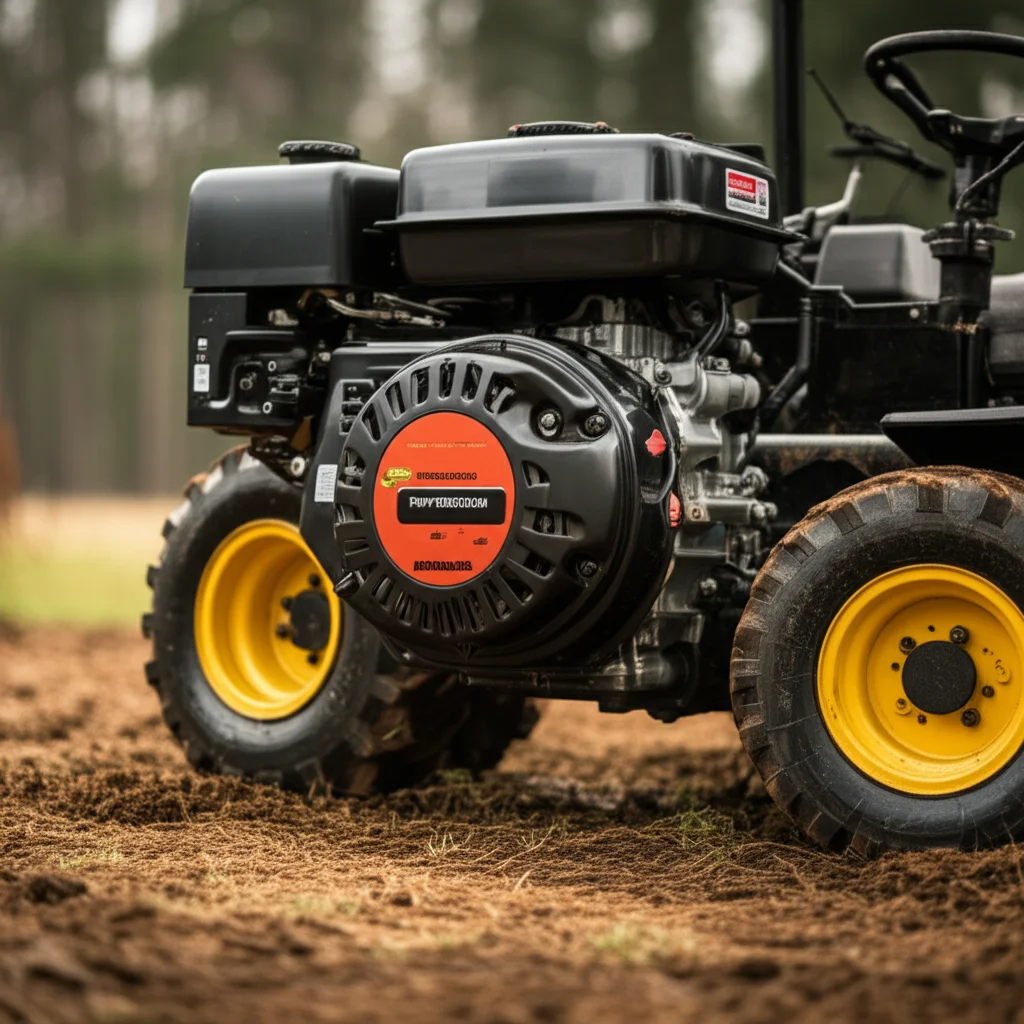· Lawn Mower Repair · 7 min read
Cub Cadet Xt1 Hydrostatic Transmission Problems

Cub Cadet XT1 Hydrostatic Transmission Problems: A Comprehensive Guide
Is your Cub Cadet XT1 losing power, jerking, or refusing to move? Chances are, you’re dealing with a hydrostatic transmission issue. These transmissions are known for their smooth operation, but like any mechanical system, they can experience problems. This article will walk you through the most common Cub Cadet XT1 hydrostatic transmission problems, how to diagnose them, and potential solutions to get you back to mowing. We’ll cover everything from low fluid levels to pump and motor failures, ensuring you have the knowledge to tackle these issues head-on.
Takeaway:
- Check the transmission fluid level regularly.
- Look for leaks around the transmission and hoses.
- Consider a transmission fluid flush if performance is declining.
- If problems persist, consult a qualified mechanic.
What are the common signs of a failing hydrostatic transmission on a Cub Cadet XT1?
A failing hydrostatic transmission on a Cub Cadet XT1 typically presents as a loss of power, jerky movements, or an inability to move at all. You might also notice unusual noises, like whining or grinding sounds, during operation. These symptoms indicate a potential issue within the transmission system that needs immediate attention.
1. Low Hydrostatic Transmission Fluid: The Most Common Culprit
Often, the simplest explanation is the correct one. Low hydrostatic transmission fluid is a frequent cause of performance issues in the Cub Cadet XT1. The fluid is vital for lubricating the moving parts, providing hydraulic pressure, and dissipating heat. When the fluid level drops, these functions are compromised, leading to slipping, jerking, and reduced power.
Checking the fluid is the first step in diagnosing any transmission problem. Locate the transmission dipstick (refer to your owner’s manual for its exact location). With the engine off and the mower on level ground, pull out the dipstick, wipe it clean, reinsert it fully, and then pull it out again to check the fluid level. It should be within the “full” range. If it’s low, top it off with the correct type of hydrostatic transmission fluid – typically a synthetic fluid specified by Cub Cadet. For more information on fluid changes, check out this guide on Cub Cadet RZT L 54 Hydrostatic Transmission Oil Change.
2. Hydrostatic Transmission Leaks: Finding the Source
If you find yourself frequently adding transmission fluid, you likely have a leak. Leaks can occur in several places, including the transmission housing, hoses, and connections. Inspect the entire transmission system carefully for any signs of fluid residue. Pay close attention to the hose connections and around the transmission pump and motor.
Identifying the source of the leak is crucial for effective repair. Tighten any loose connections. If a hose is cracked or damaged, it needs to be replaced. For significant leaks from the transmission housing itself, a professional repair might be necessary. Remember to always disconnect the spark plug before working on the transmission to prevent accidental starting.
3. Clogged Hydrostatic Transmission Filter
The hydrostatic transmission filter keeps the fluid clean and free of debris. A clogged filter restricts fluid flow, reducing hydraulic pressure and causing performance issues. This is similar to how a clogged air filter affects engine performance.
The frequency of filter replacement varies depending on usage, but it’s generally recommended to replace it annually or every 25-50 hours of operation. Consult your owner’s manual for specific recommendations. Replacing the filter is a relatively simple process, but be sure to dispose of the old filter properly.
4. Worn or Damaged Hydrostatic Transmission Pump
The hydrostatic transmission pump is the heart of the system, responsible for generating the hydraulic pressure that drives the wheels. Over time, the pump can wear out, leading to reduced pressure and performance. Symptoms of a failing pump include slow movement, inability to maintain speed, and unusual noises.
Diagnosing a pump issue often requires a pressure test, which is best left to a qualified mechanic. Replacing the pump is a more complex repair, and it can be expensive. However, it’s often the only solution if the pump is severely damaged. If you’re experiencing steering issues alongside transmission problems, you might also want to investigate Cub Cadet Zero Turn Mower Steering Problems.
5. Faulty Hydrostatic Transmission Motor
The hydrostatic transmission motor converts hydraulic pressure into rotational force, driving the wheels. Like the pump, the motor can wear out over time, leading to performance issues. Symptoms of a faulty motor include one wheel not working, jerky movement, and a lack of power.
Testing the motor requires specialized equipment and knowledge. If you suspect a faulty motor, it’s best to consult a professional mechanic. Replacing the motor is another complex repair that can be costly.
6. Drive Belt Issues: Slipping and Wear
While not directly within the hydrostatic transmission, the drive belt connecting the transmission to the wheels plays a crucial role. A worn, cracked, or loose drive belt can slip, causing a loss of power and jerky movement. This is often mistaken for a transmission problem.
Inspect the drive belt regularly for signs of wear. Ensure it’s properly tensioned. If the belt is damaged, replace it immediately. A new drive belt is a relatively inexpensive fix that can often resolve performance issues.
7. Electronic Control Unit (ECU) Problems
Modern Cub Cadet XT1 models utilize an ECU to control the hydrostatic transmission. While less common, issues with the ECU can cause erratic behavior, such as sudden stops or inability to move. These issues are often accompanied by error codes displayed on the mower’s dashboard.
Diagnosing ECU problems requires specialized diagnostic tools and knowledge. If you suspect an ECU issue, it’s best to consult a qualified mechanic.
FAQ: Common Questions About Cub Cadet XT1 Hydrostatic Transmission
Q: How often should I change the hydrostatic transmission fluid in my Cub Cadet XT1?
A: Generally, you should change the hydrostatic transmission fluid every 25-50 hours of operation or annually, whichever comes first. However, always refer to your owner’s manual for specific recommendations. Using the correct fluid is crucial for optimal performance.
Q: What type of fluid should I use in my Cub Cadet XT1 hydrostatic transmission?
A: Cub Cadet recommends using a synthetic hydrostatic transmission fluid specifically designed for these systems. Check your owner’s manual for the exact specification. Using the wrong fluid can cause damage to the transmission.
Q: Can I use a transmission fluid additive to improve performance?
A: While some additives claim to improve performance, they are generally not recommended. They can sometimes cause more harm than good. Stick to using the recommended fluid and following the manufacturer’s maintenance schedule.
Q: How can I tell if my drive belt is worn?
A: Look for cracks, fraying, or glazing on the drive belt. If the belt is stretched or loose, it needs to be replaced. A worn belt will often slip, causing a loss of power.
Q: What should I do if I suspect a major transmission problem?
A: If you suspect a major transmission problem, such as a faulty pump or motor, it’s best to consult a qualified mechanic. Attempting to repair these components yourself can be dangerous and may void your warranty.
Conclusion: Keeping Your Cub Cadet XT1 Rolling
Hydrostatic transmission problems on a Cub Cadet XT1 can be frustrating, but many issues are relatively easy to diagnose and fix. Regularly checking the fluid level, inspecting for leaks, and maintaining the filter are essential preventative measures. If you encounter more complex problems, don’t hesitate to seek professional help. By understanding the common issues and taking proactive steps, you can keep your Cub Cadet XT1 running smoothly for years to come. Remember, a well-maintained transmission is key to a productive and enjoyable mowing experience. If you’re still having trouble, consider checking out resources for similar models like the Husqvarna Transmission Problems.
- hydrostatic transmission
- Cub Cadet XT1
- lawn mower repair
- transmission problems
- mower troubleshooting

